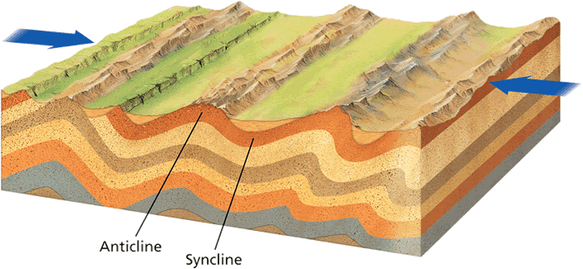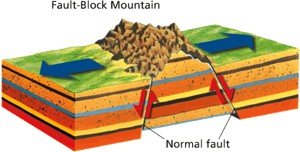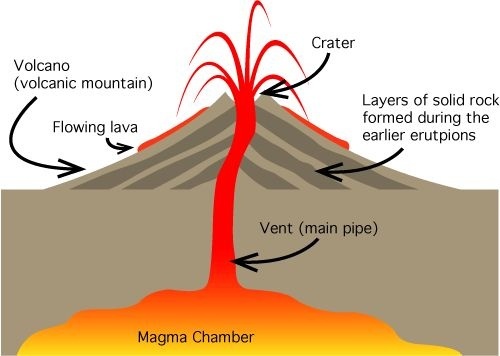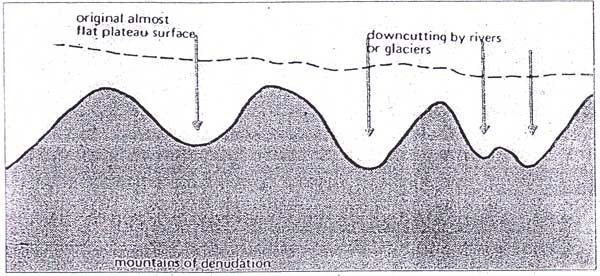The formation of mountains
Mountains are giant land features on the surface of the earth. They standup in lofty heights their slopes are steep and irregular and tops marked by peaks rising thousand meters above sea level. They occur either in single isolate mountain like the mount Kilimanjaro in Tanzania or in ranges like the Andes in South America and Himalayas in Asia.
There are four types of mountains according to mode and process of formation.
- fold mountain
- block mountain
- volcanic mountain
- residual mountain
Fold mountain
Compressional forces pushing horizontally towards each other on the earth crust causing wrinkles or fold layers of sedimentary rocks in between. The wrinkles form *upfolds (called anticlines) and downfolds (called synclines).

Credit
In simple fold, the upfolds form mountains called anticlinal mountains, while the downfold in between form valleys known as synclinal valleys.
Block mountains
These mountains are generally flat topped and steep sided when newly formed, but this shape maybe lost after long erosion. when vertical forces act on the earth crust as cracks called fault may develop where the rock have the greatest stress. The block in between two such parallel faults maybe pushed up and this result in the formation of block mountain or horst.

Credit
Volcanic mountains
Sometimes simply referred to as volcano, volcanoes are generally conical but in some cases may be domed. Molten rocks called lava and sometimes large rocks, volcanic bombs and ash are erupted from underneath the earth. They are forced through the vertical pipe called the volcanic neck coming out of a wide opening on the surface known as crater and are built up around the crater to form volcanic mountains. As a result of this process, volcanic mountains are sometimes called mountain of accumulation.

Credit
Residual mountains
Whereas the internal or tectonic forces give rise to the three types of mountain we have so far talked about, residual mountains are a result of external forces of denudation acting on the landforms after they have been structurally formed by tectonic forces. That is why they are sometimes referred to as mountains of denudation. Residual mountains are generally steep-sided and rugged in shape.

Credit
Reference
http://www.iasplanner.com/civilservices/ias-pre/gs-geography/mountains-plateaus-and-plains-compressional-tectonic-forces
https://www.universetoday.com/29833/how-mountains-are-formed/
https://www.worldatlas.com/articles/how-are-mountains-formed.html
http://kuperl.weebly.com/mountain-building.html
You received a 10.0% upvote since you are not yet a member of geopolis.
To read more about us and what we do, click here.
https://steemit.com/geopolis/@geopolis/geopolis-the-community-for-global-sciences-update-3
If you do not want us to upvote and comment on your posts concerning earth and earth sciences, please reply stop to this comment and we will no longer bother you with our love ❤️
Congratulations! This post has been chosen as one of the daily Whistle Stops for The STEEM Engine!
You can see your post's place along the track here: The Daily Whistle Stops, Issue # 31 (1/31/18)
The STEEM Engine is an initiative dedicated to promoting meaningful engagement across Steemit. Find out more about us and join us today!